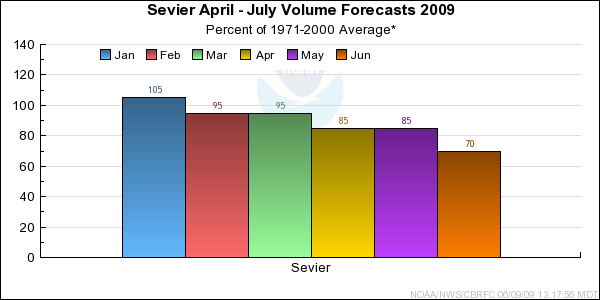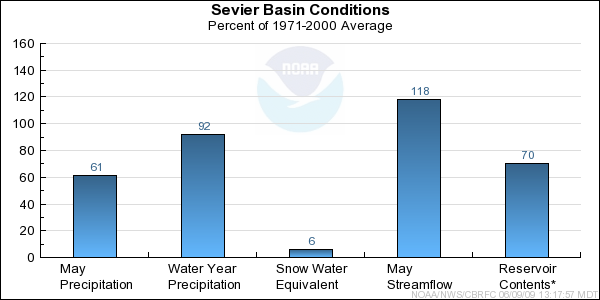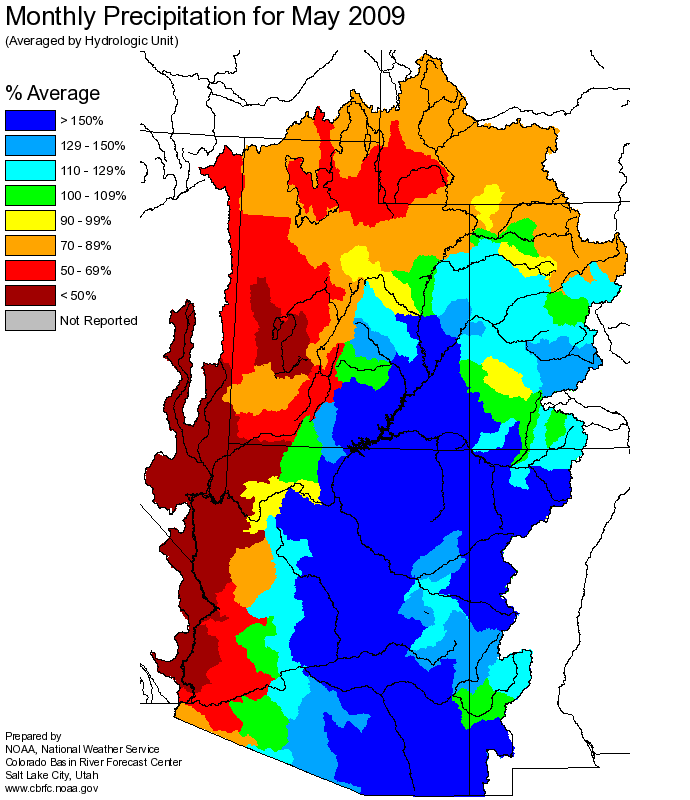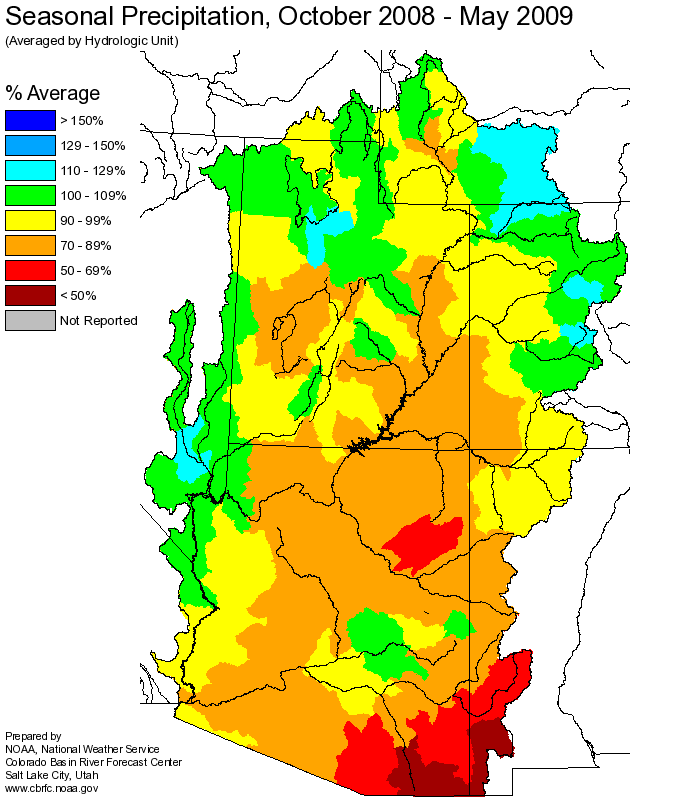-Snow Water Equivalent & Precipitation...
Monthly precipitation was below average at 61% and seasonal totals dropped to 92% of average.
Snow water equivalents indexed for the basin as of June 8th are 6% of average. As of early June the snow pack is nearly gone with the only remnants remaining on northerly facing slopes above 10,000 ft.
Snow graphs indicate that in some places the melt occurred 20-30 days earlier than normal.
-Soil Moisture & Streamflow...
May streamflows for the Sevier River at Hatch were 118% of average. A forseable consequence of the early melt is that stream flow will now rapidly decline for the remainder of the
April through July period. Streamflow models currently indicate that flows will likely be 40-80% of their normal monthly average for June and July.
-Short Term Weather Guidance...Weather guidance from
National Weather Service Meteorological Models
show above average precipitation and below average temperature conditions during the first 6-10 days of June. Meteorological models on June 8, indicate
the Great Salt Lake Basin will remain under a moist southwest flow regime through June 17, 2009. Short term
Climate Prediction Center guidance
shows a slight shift to above average temperatures and below average precipitaiton conditions for the second half of June, 2009.
-General Discussions...
Longer range predictions from NOAA's Climate Prediction Center are now suggesting a transition from ENSO-neutral conditions to
El Nino
conditions during June-August 2009. Please reference this CPC
web link for further details and
effects within the Sevier River Basin.
June through July volume forecast for the Sevier River ranged from 37% to 80% of average. The median forecast for the Sevier River Basin is 52% of average for the June, July period.
April through July forecast were calculated using observed or estimated streamflows for April and May. The current April through July median forecast is now 70% of average.
Differences between the full period forecasts and the residual forecasts may not exactly equal the actual observed volumes due to rounding conventions (see Definitions section).





